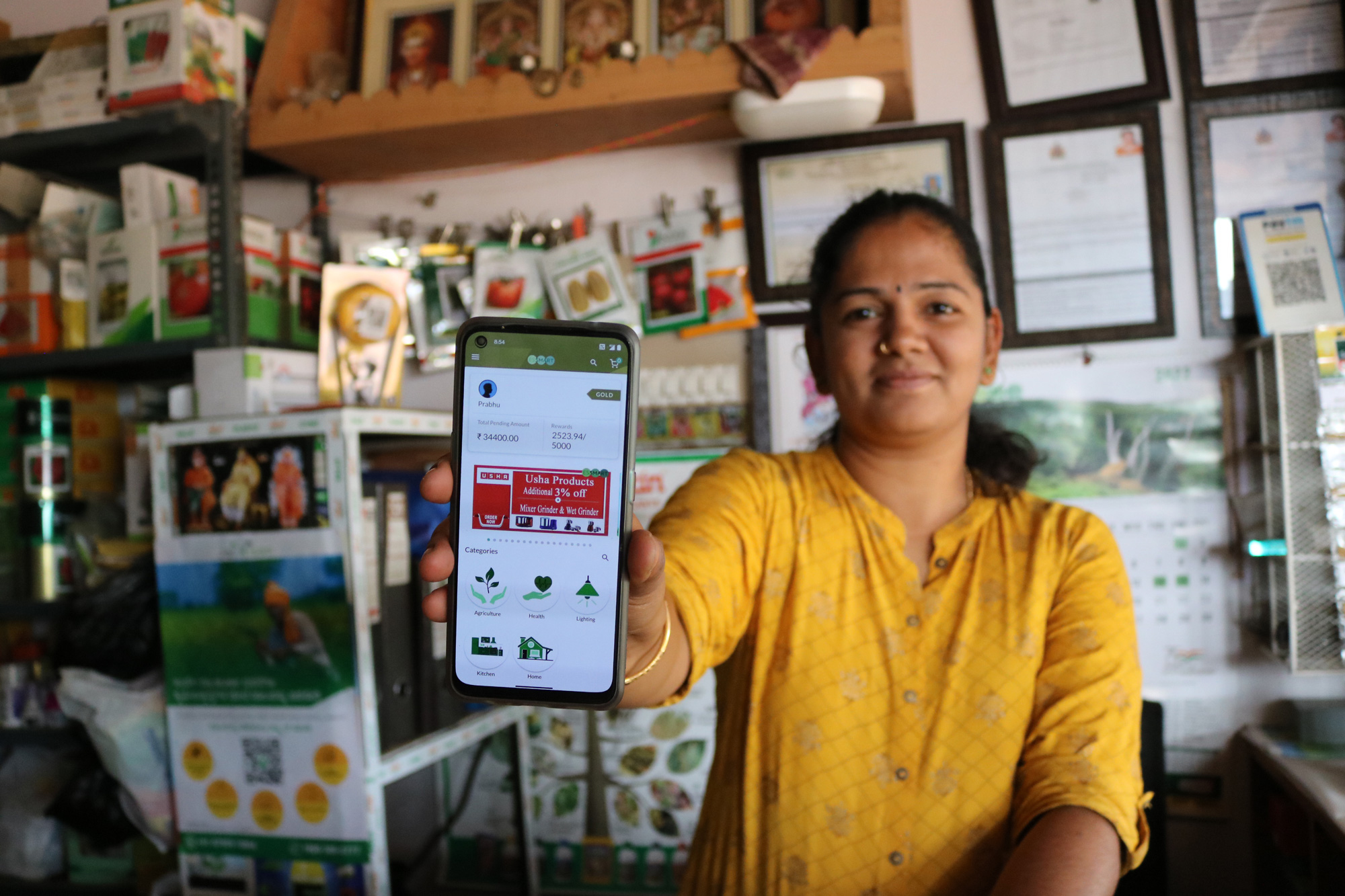Getting innovative products to rural communities
MIT spinout Essmart has created a supply chain to help local retail shops in rural India sell life-improving products.

Universities like MIT have produced a number of innovative products for people in low-resource communities around the world. But in order for those products to make an impact, they have to be manufactured at scale, get through local supply chains, and, most importantly, make enough of an impression that people actually want to buy them.
All of those challenges can erode the economics of deploying new products and ultimately limit their adoption. For the last 11 years, the MIT spinout Essmart has been helping new products reach consumers by partnering with the small retail shops that form the backbone of rural economies across the globe.
The company, which currently works with nearly 5,000 retail shops around India, offers a catalogue of more than 400 products to shop owners. Essmart offers products that improve the lives of buyers, whether by increasing crop yields, improving air quality, or boosting the efficiency of their work. Agricultural tools make up the bulk of Essmart’s products, but the company’s catalogues also feature things like clean cookstoves and solar lighting.
After shops place orders, Essmart arranges the sourcing of the products, shipping, and customer service. The company also uses a mobile platform to provide things like product training and marketing materials.
The goal is to make selling what the company calls “social livelihood products” as easy as selling a Coca-Cola.
“We’re opening up a channel for places that otherwise wouldn’t have access to these products even though nearby families could really benefit from them,” say Essmart co-founder Taylor Matthews MBA ’13, who founded the company with Diana Jue-Rajasingh ’09 SM ’12 and former D-Lab student and instructor Jackie Stenson. “It’s fantastic to see a company you spent countless hours and years working on having an impact.”
Forming a team
As an undergraduate, Stenson studied mechanical engineering at Harvard University, but she became enthralled with MIT D-Lab’s approach to innovating in low-resource settings and ended up cross-registering for two D-Lab courses and being advised for her undergraduate thesis by D-Lab founding director Amy Smith.
After graduation, to help decide what kinds of environments and technologies to work with, Stenson spent two years traveling down eastern Africa working on different projects. She developed water-related technologies with an international nonprofit in Ethiopia, promoted plastics recycling with a community group in Kenya, deployed bicycle-powered machinery with a social enterprise in Tanzania, distributed agricultural tools for a nongovernmental organization in Malawi, and studied bicycle ambulances for a trust fund in Zambia.
Her takeaway was that impactful technologies already exist in many low-resource communities, but their dissemination and adoption — and thus, their impact — was uneven and lacking.
The insight led her to Cambridge University in the United Kingdom, where she studied technology dissemination.
Stenson returned to Cambridge, Massachusetts, in 2011. Shortly after her arrival, D-Lab lecturer Joost Bonsen connected her to Jue-Rajasingh, who was also studying the effects of new technologies on underserved communities as part of her master’s work at MIT.
“Joost said, ‘I have a co-founder for you,’” Stenson recalls. “It was the first time I had heard the word co-founder, and honestly it was the first time I had thought of being an entrepreneur.”
The founders partnered with Prashanth Venkataramana, who Stenson had met at Cambridge University, and later met Matthews at a pitch session hosted at the MIT Sloan School of Management, where Matthews was an MBA candidate.
The team used Essmart as a case study in several of Matthews’ courses and participated in the MIT $100K Entrepreneurship Competition. After graduating they received support from the MIT IDEAS Competition and the D-Lab Scale Up Fellowships program to move to India and work on Essmart full time.
Stenson’s research indicated that the best way to get new products adopted in rural communities was through the relationships consumers already had with local shop owners.
“Local retail shops are prevalent everywhere in the world, they have incredibly strong, trust-based connections with customers, and they can be those agents of change in the communities showing people what’s new and worth getting,” Stenson says.
To start working with a new shop, Essmart’s sales representatives meet with the owners, learn about their stores, and suggest a good product to start with. Shops in Essmart’s network typically specialize in products related to agriculture, metal products such as pots and pans, electronics, and general hardware.
From there, shop owners learn how to use Essmart’s mobile platform, where they can place new orders, receive product demonstrations, get warranty information, and stay in touch with their sales representative.
Essmart monitors new products coming from places like MIT, Harvard University, and the Indian Institutes of Technology and ultimately sources products from spinout companies and nonprofits.
Selling innovative products involves more risk for shop owners because such products are usually more expensive and complex. If a shop owner were to start selling a solar-powered water pump, for instance, they’d need to be able to answer customer questions about how it should be used, why it’s worth the upfront investment, and what to do if it breaks or needs to be returned.
“If the shop owners can’t answer questions about a product, they’re not going to feel comfortable selling it,” Stenson explains.
An evolving model
The challenges caused by the Covid-19 pandemic turned into learning opportunities for Essmart’s team. They launched their mobile app for shop owners last year and have since used it to scale more quickly than ever before. In fact, some of Essmart’s fastest-growing months occurred during the early months of the pandemic.
“Now we can supplement in person interactions with tech, so initial onboarding and teaching can still happen in person to help overcome initial doubts or confusion, but then we can provide support through the platform,” Stenson says.
Earlier this year, Essmart announced a partnership with the global nonprofit One Acre Fund, which provides products and training to farmers around the world. Through the deal, Essmart expanded its operations to offer farmers in northern India a product catalogue that includes One Acre’s offerings such as seeds and fertilizers along with Essmart’s equipment.
In addition to extending its supply chain, Essmart is also helping to create new ways of designing and deploying products in low-resource settings. The company has run about a dozen studies that let organizations test product ideas with real consumers and decide between different technologies and features.
Stenson says Essmart’s work in that area will continue to grow.
“We want to be the single point of contact that connects rural markets with life-improving, livelihood-generating technologies,” Stenson says. “And we don’t want that connection to be one-way. We also want to explore partnerships to help bring information and goods back up through the supply chain, whether that’s market linkages or data on rural customer needs. If we can send that information back up the supply chain, engineers will design better products and funders will make better, more-informed decisions based on what the market actually wants. That’s the ultimate dream: to have rural customers’ voices be a bigger part of product conversations and decisions.”





































